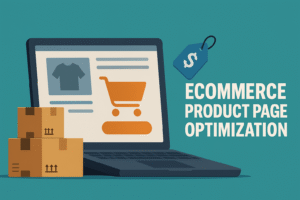Imagine shopping for something online, found something you liked, only to be turned away because the merchant was out of stock? For a merchant, sometimes that is the only chance you will get to make that person a customer, and maybe a customer that returns to buy more in the future. Now they are off to a competitor’s site to find what they wanted.
Inventory management is a significant, sometimes overlooked, cog in the supply chain of an ecommerce store. It can directly impact sales, how people perceive your brand, and customer retention.
A smooth running ecommerce store will have no trouble keeping inventory in stock. All products listed in their store can be purchased by visitors and the fulfillment process can begin right away.
What is Inventory Replenishment?
Inventory replenishment involves receiving inventory from a supplier to stock in a warehouse or fulfillment center as well as the process of moving inventory from storage to more easily accessible picking shelves.
The idea is to have enough inventory readily available for pickers to be able to easily access to immediately fulfill orders. As the picking inventory gets lower, more inventory is moved from storage to replenish it. As storage inventory gets low, new inventory is ordered from the supplier to keep it stocked.
What Happens if Inventory Replenishment is Not Done Properly?
If inventory replenishment is not done properly, it will impact a company’s ability to fulfill orders in a timely manner. Failure to have an efficient inventory replenishment process can result in:
Overstocking
Many products have a definitive shelf life such as supplements, cosmetics, food, and beverages. Once the expiration date approaches, they become unsellable.
A stock out provides a bad customer experience, but overstocking can have an even bigger negative impact on your bottom line.
Replenishing stock too soon can increase storage costs by having inventory sit on shelves longer than needed. Not paying attention to customer demand and/or the seasonality of certain products can also cause inventory to build up on warehouse shelves instead of shipping out to customers.
Out of Stock Items / Backorders
If you are not replenishing inventory soon enough, you obviously run the risk of running out of those items. This can result in customers trying to buy something only to be informed that their item is out of stock.
Depending on how you run your store, they may be given the option of placing a backorder. With a backorder, they can purchase it and pay for the product, but the order is not going to ship until the inventory has been replenished at some predetermined date. In the age of Amazon Prime and 2-day shipping for nearly anything you can think of, backorders can hurt the customer experience and brand loyalty.
To avoid this, it is a good idea to maintain safety stock. Safety stock means you keep a certain amount of emergency inventory on hand in case there is an unexpected surge in orders or a supply chain issue.
Split Shipments
If a customer orders multiple items from your store at the same time but one or more of those items is out of stock, a split shipment will need to be sent. A split shipment is exactly what it sounds like. It is multiple shipments to fulfill the same order.
Sending multiple shipments to fulfill one order will increase your shipping and packaging costs and if not communicated to the customer well can also cause confusion on their end.
Inventory Replenishment Best Practices
Efficient replenishment does not just happen. You need to have processes and strategies in place to keep it running smoothly.
Leverage Technology
Utilize inventory management software to be able to see your inventory levels in real-time. Software will allow you to easily stay on top of inventory levels, track sales trends, and streamline your inventory management system.
Utilize Demand Forecasting
With real-time inventory data you can gain insights into which products fly off the shelves, which ones tend to stay in storage longer, and if there is any seasonality to their behavior.
This demand forecasting allows you to maintain adequate inventory throughout the year while avoiding overstocking.
Review Your Procedures
It is a good idea to routinely review your processes and strategies around your inventory management, including replenishment.
Conclusion
Inventory replenishment is just one component of a complete inventory management strategy. Inefficient management of inventory levels can result in out of stock items, negatively impacting customers, or overstocking, resulting in additional storage and potential waste costs.









